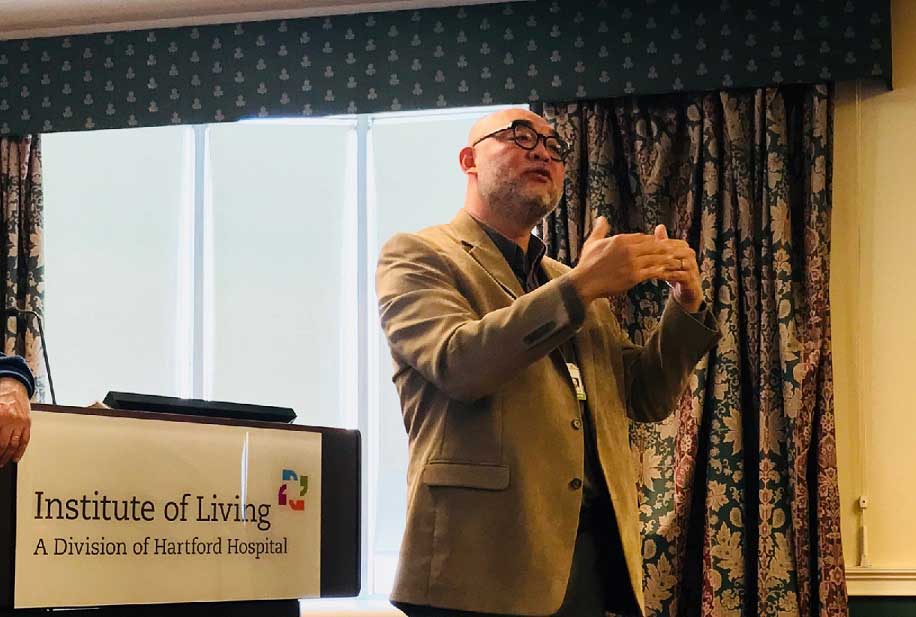Could a few minutes of pingpong, basketball or walking help improve cognition and symptoms of mental health disorders? According to Jimmy Choi, senior scientist at the Institute of Living’s Olin Neuropsychiatry Research Center, the answer is yes.
“We all know physical exercise is good for us, but it is still hard for us to do,” Choi said during a recent IOL Grand Rounds presentation. “There is a mountain of evidence for this.”
Exercise improves cognition and is an effective treatment for depression and anxiety — and the treatment effect is substantial. Physical exercise leads to fewer and less severe symptoms, and better overall mental status.
The Institute of Living has long integrated exercise into its treatment offerings.
“Ever since way back when, the individuals who first formulated treatment plans at the beginning of the Institute of Living talked about the importance of exercise and fresh air,” said Dr. Godfrey Pearlson, director of the Olin Neuropsychiatry Research Center at the Institute of Living. “We’ve come back full circle to those recommendations.”
Choi’s key elements of an effective exercise program:
- Intrinsic motivation. “One of the strongest mediators of physical exercise outcome is internal motivation to do the treatment without external reinforcement,” he said. “It seems like the rest of the scientific world is kind of catching up to the IOL. We’ve been doing exercise for decades, and now exercise is becoming a big part of psychiatric rehabilitation programs all over.”
- Choice. “When you give people a menu of choices, it increases engagement in exercise and improves their adherence,” he said. “And when people exercise on a regular basis, they’re already supposed to do different things each time to reduce injury and muscle fatigue — so the idea of choice is actually good exercise physiology as well.”
- Volitional exhaustion. “Volitional exhaustion is the point when you get your heart rate to a level that makes the exercise beneficial to your cardiovascular system and to your brain,” he said. “When you reach volitional exhaustion, through walking, a game of basketball, or even pingpong, your muscles release a protein that makes its way to the brain and improves brain function. This provides a target for making an impact on symptoms and cognition.”
- Integration with other treatments. “Merging exercise with other therapies encourages synergistic benefits,” he said. “Different therapies inform each other. For example, volitional exhaustion creates a window of opportunity, usually within a couple of hours, when the brain is more receptive to learning.”
- Consultation with experts. “We have the privilege of having a very well-known exercise physiologist right here at Hartford Hospital, Dr. Beth Taylor,” he said. “Exercise science can inform us and experts help us provide the best physical exercise program for our patients.”
For more information on the Institute of Living, click here.

